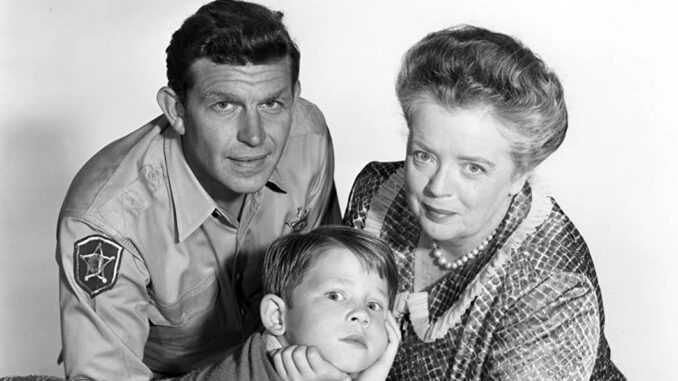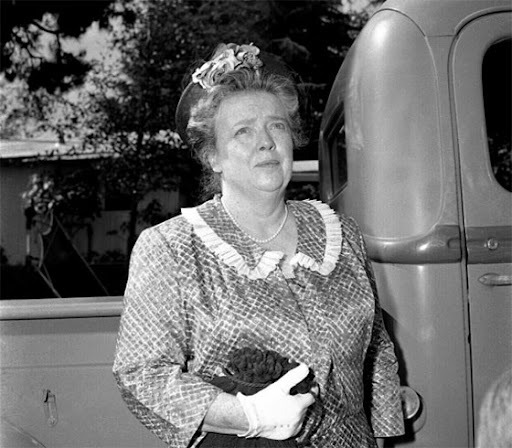
Introduction: When Aunt Bee Wanted to Rebel
When you think of The Andy Griffith Show, the image that likely pops into your head is a wholesome slice of small-town life, filled with wisdom, laughter, and warm-hearted characters. And no character embodied that warmth more than Aunt Bee, played by Frances Bavier.
But here’s something that might surprise you: Bavier didn’t always feel cozy in Mayberry. In fact, her time on the show left her with an unexpected desire—to shed her sweet image and take on the role of a “really bad woman.”
Let’s explore why one of television’s most beloved maternal figures was ready to turn heel.
Frances Bavier: The Woman Behind Aunt Bee
A Classically Trained Actress with Serious Range
Frances Bavier wasn’t just some sweet old lady plucked off the street for a sitcom. She was a trained actress with Broadway and film credits long before she set foot in Mayberry. She studied at the American Academy of Dramatic Arts and appeared in serious dramas before taking on the gentle, apron-wearing Aunt Bee.
Typecast in a Cozy Role
Once she became Aunt Bee, though, everything changed. She became so closely associated with the character that the world seemed to forget she was an actress — and not actually someone who made homemade pies and clucked about manners.
Why Playing Aunt Bee Left Bavier Frustrated
Always the Caregiver, Never the Rebel
While Aunt Bee was beloved for her nurturing ways, Bavier grew weary of being the perpetual homemaker. The script rarely allowed her to be anything other than kind, proper, and—let’s face it—a bit dull. She longed for complexity, contradictions, and a bit of moral chaos.
The Burden of Perfection
Think about it: playing the same “good woman” role for nearly a decade can begin to feel like being trapped in a loop. Every episode, same tidy house, same caring advice, same perfect moral compass. That kind of typecasting can smother any actor’s creativity.
Her Desire to ‘Play a Really Bad Woman’
Breaking Out of Mayberry’s Mold
In interviews after The Andy Griffith Show, Bavier openly expressed her craving for a darker role. She wanted to shock people. She wanted to show the world that she wasn’t just a nice old lady. She could be sharp, conniving—even villainous.
A Role Reversal Fantasy
Can you imagine Aunt Bee blackmailing a neighbor or secretly embezzling from the church bake sale fund? That’s the kind of contrast Bavier yearned to explore. She didn’t want to erase Aunt Bee—she just wanted to prove she could be more than her.
Typecasting in Classic Television
Hollywood’s Golden Cage
Actors in the 1960s and ‘70s often got stuck in roles they couldn’t escape. The audience saw them one way—and casting directors did too. For women especially, the “sweet older lady” role was a one-way street. Once you were there, you weren’t coming back.
The Price of Popularity
Bavier’s fame came at a cost. Millions loved her, but that love had limits. It was conditional on her staying lovable, harmless, and familiar. Wanting to play a villain? That wasn’t part of the deal.

Frances Bavier vs. Aunt Bee: The Real-Life Contrast
An Independent Spirit Behind the Scenes
In real life, Bavier was nothing like Aunt Bee. She was private, independent, and even a bit reclusive. Rumors flew that she clashed with her co-stars, especially Andy Griffith himself. The truth? She simply wasn’t as warm and fuzzy as the role she portrayed.
Retreat from the Spotlight
After the show ended, Bavier moved to a small town in North Carolina and lived quietly—almost like she was hiding from the fame Aunt Bee had brought her. Her desire to act again never left, but Hollywood wasn’t knocking on her door with dark roles.
What Her Desire Says About Acting and Identity
Playing the Opposite
There’s something universal in what Bavier felt. When you spend too long being seen one way, you start craving the opposite. It’s like someone who’s always the “good girl” suddenly wanting a leather jacket and a motorcycle. Not to rebel, but to breathe.
Creative Frustration Builds Up
Actors are artists, and artists need space to explore. Being boxed into one role—even a beloved one—can feel like having paint but only being allowed to use one color.
Audience Expectations and Their Grip
Viewers Wanted Aunt Bee to Stay Aunt Bee
Let’s be honest—if Bavier had shown up in a gritty crime drama as a mob boss, audiences might have freaked out. For many, Aunt Bee was comfort. She was home. Seeing her go rogue might have felt like watching Grandma rob a bank.
The Comfort of Familiar Faces
Television thrives on familiarity. Audiences grow attached to characters like Aunt Bee because they represent stability. But stability for the viewer can mean stagnation for the actor.
Could Frances Bavier Have Pulled Off a Villain Role?
Absolutely—She Had the Talent
Let’s not kid ourselves—Bavier could have knocked a villainous role out of the park. She had the training, the voice, the gravitas. Imagine her playing a stern matriarch in a gothic drama, or a ruthless tycoon in a made-for-TV movie. Chills, right?
We Just Weren’t Ready to See It
The sad truth? The world wasn’t ready for Aunt Bee to be anything but Aunt Bee. Bavier had range, but the industry lacked imagination.
The Legacy She Left Behind
Forever Aunt Bee, But Not Forgotten
Even though she never got to play that “really bad woman,” Bavier’s impact is undeniable. She gave the world a character who felt like family. She brought grace to a role that could have been flat and forgettable.
A Complicated Star in a Simple Role
Frances Bavier reminds us that actors are rarely who we imagine them to be. They give us characters we love, but inside, they may be wrestling with creative demons we’ll never fully understand.
Final Thoughts: The Villain Who Never Was
Frances Bavier wanted what so many artists crave—freedom. Freedom from expectations, from typecasting, from the narrow lanes of television stardom. While she’ll always be remembered as Aunt Bee, it’s worth honoring the version of her we never got to see.
Behind every smile on screen might be a scream waiting to be unleashed. And in Bavier’s case, it was the scream of a woman who didn’t want to bake cookies anymore—she wanted to burn the kitchen down.
FAQs
Q1: Why did Frances Bavier want to play a “really bad woman”?
She felt typecast after years of playing the kind-hearted Aunt Bee and wanted to challenge herself by taking on a darker, more complex role.
Q2: Did Frances Bavier ever play a villain after ‘The Andy Griffith Show’?
No, she never got the opportunity. Hollywood saw her as Aunt Bee and didn’t offer her darker roles.
Q3: Was Frances Bavier similar to Aunt Bee in real life?
Not at all. She was private, independent, and even somewhat reclusive—very different from her TV persona.
Q4: Did Frances Bavier enjoy working on ‘The Andy Griffith Show’?
It was a complicated relationship. She appreciated the role but also felt creatively stifled and had occasional conflicts with co-stars.
Q5: What is Frances Bavier’s legacy in television?
She remains a television icon, best known for Aunt Bee, a role that became a cultural touchstone for generations—even if it wasn’t the full expression of her talent.
